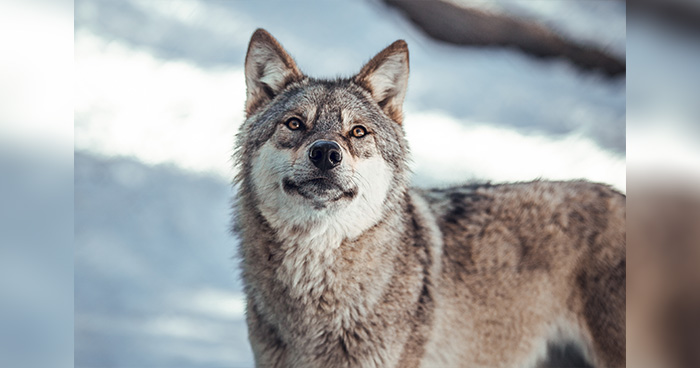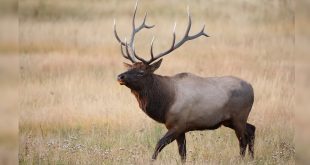On Saturday, January 18th, Colorado Parks and Wildlife (CPW) completed capture and release work for the second gray wolf reintroduction season in support of the Colorado Gray Wolf Restoration and Management Plan. Fifteen wolves were translocated from the central interior of British Columbia to Colorado. Separately, the agency also successfully completed the release of five members from the original Copper Creek Pack. All wolves were released in Eagle and Pitkin counties, continuing the agency’s efforts to create a permanent, self-sustaining gray wolf population in Colorado. No further releases are planned for the 2024-2025 capture season. This completes the second year of three to five planned years of wolf releases.
British Columbia Operation
In British Columbia, CPW worked closely with a team from the B.C. Ministry of Water, Land and Resource Stewardship (WLRS) to capture the gray wolves. CPW biologists, veterinarians and wildlife officers flew to Prince George, B.C., in January and met with B.C. biologists, veterinarians, wildlife officials, and helicopter capture crews. The full wolf relocation team assembled after the January 8, 2025 CPW Commission meeting and began capture operations in the Canadian province 48 hours later.
After the wolves were flown to Colorado, CPW released five wolves on each of three dates: Jan. 12, 14 and 16 in Eagle and Pitkin Counties. CPW worked to release the animals as expeditiously as possible post-capture in British Columbia. Due to lengthy travel times from British Columbia to Colorado and border inspections, all three releases occurred during the evening. In total, seven males and eight females were translocated.
Wolves were captured from areas in British Columbia where predator reduction is occurring to support caribou recovery. Colorado Parks and Wildlife was responsible for all costs associated with the capture and transport of these gray wolves and there was no compensation or payment for the wolves themselves. The export of wolves from British Columbia to Colorado is permitted under the Convention on International Trade in Endangered Species of Wild Fauna and Flora (CITES), administered by the Canadian Wildlife Service.
CPW biologists were careful to select wolves that met the criteria identified at the outset of the program. Wolf selection followed the guidance of the Colorado Wolf Restoration and Management Plan. Animals with major injuries — such as several nonfunctional canines, missing eyes, fractured or missing limbs — or mange or lice infection were not chosen for reintroduction. Gray wolves from this area of B.C. do not overlap with areas where livestock are present, so there are no concerns that the wolves selected have been involved in repeated livestock depredations.
Copper Creek Operation
On January 18, CPW successfully relocated the Copper Creek female and four pups. CPW wildlife veterinarians evaluated the health status of the female and the four pups while at the secure facility where they had been since late August and early September 2024 and determined that they were in good condition. The pups were released with the female to ensure that they learn to hunt. This gives the animals the best chance at survival, furthering the goal of successfully restoring wolves in Colorado. Each animal was fitted with a collar for tracking after release. The wolves were then placed in crates and transported to a release site. All five animals are collared and will be closely monitored.
The capture of the pack was a management action that was taken to change the behavior of the animals to reduce depredations and could further impact the adult female’s behavior moving forward.
 Eastmans' Official Blog | Mule Deer, Antelope, Elk Hunting and Bowhunting Magazine | Eastmans' Hunting Journals
Eastmans' Official Blog | Mule Deer, Antelope, Elk Hunting and Bowhunting Magazine | Eastmans' Hunting Journals






So, British Columbia is getting rid of these wolves to facilitate their caribou population recovery efforts.. can you read between the lines, Colorado GFand P? Chute chute chute
The hunters in BC are laughing their collective asses off at the stupidity of Colorado Parks & Wildlife, and rightfully so.